




May
1 May
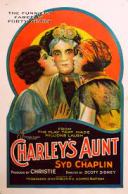 Charley’s Aunt (Dir. Scott Sidney, US, 1925) (Screening format – not known, 80mins) If his beautiful young wards Kitty Verdun and niece Amy Spettigue marry, aging guardian Stephen Spettigue loses his income. He is determined to derail their romance at all costs and whisks the girls off to Scotland, out of the reach of their suitors, Jack Chesney and Charley Wykeham. To the rescue comes
Charley’s Aunt (Dir. Scott Sidney, US, 1925) (Screening format – not known, 80mins) If his beautiful young wards Kitty Verdun and niece Amy Spettigue marry, aging guardian Stephen Spettigue loses his income. He is determined to derail their romance at all costs and whisks the girls off to Scotland, out of the reach of their suitors, Jack Chesney and Charley Wykeham. To the rescue comes  pal Lord Fancourt Babberly (Syd Chaplin) – ‘Babbs’ – who agrees to dress in drag and assume the identity of Charley’s aunt Donna Lucia, a filthy rich Brazilian heiress. Under the premise of a visit from Charley’s aunt, the boys are able to gain an invitation to visit Scotland, where they plan to distract Spettigue, and propose to their
pal Lord Fancourt Babberly (Syd Chaplin) – ‘Babbs’ – who agrees to dress in drag and assume the identity of Charley’s aunt Donna Lucia, a filthy rich Brazilian heiress. Under the premise of a visit from Charley’s aunt, the boys are able to gain an invitation to visit Scotland, where they plan to distract Spettigue, and propose to their 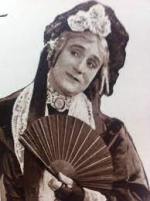 sweethearts. The plan is ruined when Amy’s uncle learns of Dona Lucia’s millions, and decides he must have ‘her’ for his own. Sydney Chaplin, the older half-brother of Hollywood legend Charlie Chaplin, enjoyed screen success in Keystone comedies, most notably A Submarine Pilot (1915). He quit acting to successfully negotiate Charlie’s first million dollar contract in 1916 but reappeared on the screen in the 1920s in a string of comedies including The Perfect Flapper (1924), Charley’s Aunt (1925) and The Better Ole (1926). Find out more at moviessilently.com Presented by the Kennington Bioscope. With live musical accompaniment. Cinema Museum, Lambeth. Link
sweethearts. The plan is ruined when Amy’s uncle learns of Dona Lucia’s millions, and decides he must have ‘her’ for his own. Sydney Chaplin, the older half-brother of Hollywood legend Charlie Chaplin, enjoyed screen success in Keystone comedies, most notably A Submarine Pilot (1915). He quit acting to successfully negotiate Charlie’s first million dollar contract in 1916 but reappeared on the screen in the 1920s in a string of comedies including The Perfect Flapper (1924), Charley’s Aunt (1925) and The Better Ole (1926). Find out more at moviessilently.com Presented by the Kennington Bioscope. With live musical accompaniment. Cinema Museum, Lambeth. Link
4 May
 Pandora’s Box (Dir. G W Pabst, Ger, 1929) (Screening format –digital, 135mins) Based on two plays by the German author Frank Wedekind, Erdgeist (Earth Spirit, 1895), which Pabst himself had directed for the stage, and Die Büchse der Pandora (Pandora’s Box, 1904), the silent drama follows the tumultuous life of the showgirl Lulu whose unselfconscious sexuality brings about the ruin of all those that fall for her and eventually her own. In a daring move, Pabst chose a little known American
Pandora’s Box (Dir. G W Pabst, Ger, 1929) (Screening format –digital, 135mins) Based on two plays by the German author Frank Wedekind, Erdgeist (Earth Spirit, 1895), which Pabst himself had directed for the stage, and Die Büchse der Pandora (Pandora’s Box, 1904), the silent drama follows the tumultuous life of the showgirl Lulu whose unselfconscious sexuality brings about the ruin of all those that fall for her and eventually her own. In a daring move, Pabst chose a little known American 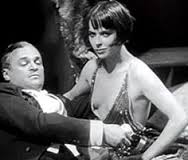 actress over the more experienced Marlene Dietrich for the part of Lulu, a decision that made the young Louise Brooks an international star. Her innocent looks paired with her natural erotic allure and sense of movement – Brooks was also a dancer – perfectly matched Pabst’s idea of his heroine as unwitting seductress. Subjected to cuts to eliminate some of its “scandalous” content and unfavourably reviewed by critics at the time, it is now considered one of the boldest and most modern films of the Weimar era highlighting Pabst’s command of camera language and montage. Find out more at silentlondon.co.uk . With recorded Peer Raben score. BFI Southbank, London Link
actress over the more experienced Marlene Dietrich for the part of Lulu, a decision that made the young Louise Brooks an international star. Her innocent looks paired with her natural erotic allure and sense of movement – Brooks was also a dancer – perfectly matched Pabst’s idea of his heroine as unwitting seductress. Subjected to cuts to eliminate some of its “scandalous” content and unfavourably reviewed by critics at the time, it is now considered one of the boldest and most modern films of the Weimar era highlighting Pabst’s command of camera language and montage. Find out more at silentlondon.co.uk . With recorded Peer Raben score. BFI Southbank, London Link
5 May
 Sherlock Jnr (Dir. Buster Keaton, 1924) (Screening format – not known, 45 mins) In Sherlock Jr, a kindly movie projectionist (Buster Keaton) longs to be a detective. When his fiancée (Kathryn McGuire) is robbed by a local thief (Ward Crane), the poor projectionist is framed for the crime. Using his amateur detective skills, the projectionist follows the thief to the train station – only to find himself locked in a train car. Disheartened, he returns to his movie theatre, where he falls asleep and dreams that he is the great Sherlock Holmes. Although not a popular success on its initial release, the film has come to be recognised as a Keaton classic with its special effects and elaborate stunts making it a landmark in motion picture history. Find out more at silentfilm.org. With live musical accompaniment by Hugo Max. Prince Charles Cinema, London Link
Sherlock Jnr (Dir. Buster Keaton, 1924) (Screening format – not known, 45 mins) In Sherlock Jr, a kindly movie projectionist (Buster Keaton) longs to be a detective. When his fiancée (Kathryn McGuire) is robbed by a local thief (Ward Crane), the poor projectionist is framed for the crime. Using his amateur detective skills, the projectionist follows the thief to the train station – only to find himself locked in a train car. Disheartened, he returns to his movie theatre, where he falls asleep and dreams that he is the great Sherlock Holmes. Although not a popular success on its initial release, the film has come to be recognised as a Keaton classic with its special effects and elaborate stunts making it a landmark in motion picture history. Find out more at silentfilm.org. With live musical accompaniment by Hugo Max. Prince Charles Cinema, London Link
11 May
 Foolish Wives (Dir. Erich von Stroheim, US, 1922) (Screening format – not known, 117mins) In Stroheim’s 1922 film a con artist masquerades as Russian nobility and attempts to seduce the wife of an American diplomat. When released in 1922, the film was the most expensive film made at that time, and billed by Universal
Foolish Wives (Dir. Erich von Stroheim, US, 1922) (Screening format – not known, 117mins) In Stroheim’s 1922 film a con artist masquerades as Russian nobility and attempts to seduce the wife of an American diplomat. When released in 1922, the film was the most expensive film made at that time, and billed by Universal 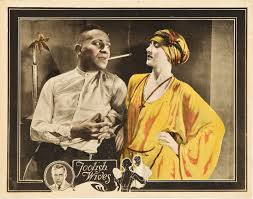 Studios as the “first million-dollar movie” to come out of Hollywood. Originally, von Stroheim intended the film to run anywhere between 6 and 10 hours, and be shown over two evenings, but Universal executives opposed this idea. The studio bosses cut the film drastically before the release date. Find out more at sensesofcinema.com. Presented as part of the Maynooth University Arts And Minds Festival. With live musical accompaniment by Stephen Horne. Maynooth University, Eire Link
Studios as the “first million-dollar movie” to come out of Hollywood. Originally, von Stroheim intended the film to run anywhere between 6 and 10 hours, and be shown over two evenings, but Universal executives opposed this idea. The studio bosses cut the film drastically before the release date. Find out more at sensesofcinema.com. Presented as part of the Maynooth University Arts And Minds Festival. With live musical accompaniment by Stephen Horne. Maynooth University, Eire Link
12 May
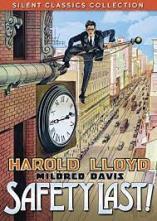 Safety Last (Dir. Fred C Newmeyer/Sam Taylor, US, 1923) (Screening format – not known, 73mins) A boy (Harold Lloyd) moves to New York City to make enough money to support his loving girlfriend (Mildred Davis), but soon discovers that making it in the big city is harder than it looks. When he hears that a store manager will pay $1,000 to anyone who can draw people to his store, he convinces his friend, the “human fly,” (Bill Strother) to climb the building and split the profit with him. But when his pal gets in trouble with the law, he must complete the crazy stunt on his own. The image of Harold Lloyd hanging desperately from the hands of a skyscraper clock during Safety Last! is one of the great icons of film history (although it was achieved with a certain amount of film trickery) and this remains one of the best and best loved comedies of the silent era. Find out more at rogerebert.com. With live musical accompaniment by Stephen Horne. Irish Film Institute, Dublin Link
Safety Last (Dir. Fred C Newmeyer/Sam Taylor, US, 1923) (Screening format – not known, 73mins) A boy (Harold Lloyd) moves to New York City to make enough money to support his loving girlfriend (Mildred Davis), but soon discovers that making it in the big city is harder than it looks. When he hears that a store manager will pay $1,000 to anyone who can draw people to his store, he convinces his friend, the “human fly,” (Bill Strother) to climb the building and split the profit with him. But when his pal gets in trouble with the law, he must complete the crazy stunt on his own. The image of Harold Lloyd hanging desperately from the hands of a skyscraper clock during Safety Last! is one of the great icons of film history (although it was achieved with a certain amount of film trickery) and this remains one of the best and best loved comedies of the silent era. Find out more at rogerebert.com. With live musical accompaniment by Stephen Horne. Irish Film Institute, Dublin Link
14 May
 Hellbound Train (Dir. Eloyce and James Gist, US, 1930) (Screening format – not known, 50mins) The film is the work of self-taught filmmakers James and Eloyce Gist, African-American evangelists who employed cinema as a tool for their travelling ministry. Their surreal visual allegories were screened in churches and meeting halls, accompanied by a sermon and the passing of a collection plate. Rather than having a linear story, the film is instead a catalogue of iniquity, a car-by-car
Hellbound Train (Dir. Eloyce and James Gist, US, 1930) (Screening format – not known, 50mins) The film is the work of self-taught filmmakers James and Eloyce Gist, African-American evangelists who employed cinema as a tool for their travelling ministry. Their surreal visual allegories were screened in churches and meeting halls, accompanied by a sermon and the passing of a collection plate. Rather than having a linear story, the film is instead a catalogue of iniquity, a car-by-car 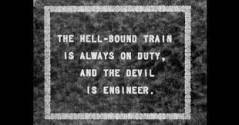 dramatization of the sins of the Jazz Age (including gambling, dancing, alcohol, and the mistreatment of animals), presided over by a horned devil, culminating in a colossal derailment (a model train tossed into a bonfire). Admittedly, the production values are minimal—being shot with hand-held 16mm equipment with natural light, and without audio—but the surreality of it all makes for a compelling viewing experience, and shows that renegade, visionary filmmakers can be found in the most unexpected places. Findout more at onlysky.media Presented as part of the Flatpack Film Festival. With live jazz accompaniment by swaampcat (Ebunoluwa Adepoju). Lyttelton Theatre , Birmingham Link
dramatization of the sins of the Jazz Age (including gambling, dancing, alcohol, and the mistreatment of animals), presided over by a horned devil, culminating in a colossal derailment (a model train tossed into a bonfire). Admittedly, the production values are minimal—being shot with hand-held 16mm equipment with natural light, and without audio—but the surreality of it all makes for a compelling viewing experience, and shows that renegade, visionary filmmakers can be found in the most unexpected places. Findout more at onlysky.media Presented as part of the Flatpack Film Festival. With live jazz accompaniment by swaampcat (Ebunoluwa Adepoju). Lyttelton Theatre , Birmingham Link
17 May
 Pandora’s Box (Dir. G W Pabst, Ger, 1929) (Screening format –digital, 135mins) Based on two plays by the German author Frank Wedekind, Erdgeist (Earth Spirit, 1895), which Pabst himself had directed for the stage, and Die Büchse der Pandora (Pandora’s Box, 1904), the silent drama follows the tumultuous life of the showgirl Lulu whose unselfconscious sexuality brings about the ruin of all those that fall for her and eventually her own. In a daring move, Pabst chose a little known American
Pandora’s Box (Dir. G W Pabst, Ger, 1929) (Screening format –digital, 135mins) Based on two plays by the German author Frank Wedekind, Erdgeist (Earth Spirit, 1895), which Pabst himself had directed for the stage, and Die Büchse der Pandora (Pandora’s Box, 1904), the silent drama follows the tumultuous life of the showgirl Lulu whose unselfconscious sexuality brings about the ruin of all those that fall for her and eventually her own. In a daring move, Pabst chose a little known American  actress over the more experienced Marlene Dietrich for the part of Lulu, a decision that made the young Louise Brooks an international star. Her innocent looks paired with her natural erotic allure and sense of movement – Brooks was also a dancer – perfectly matched Pabst’s idea of his heroine as unwitting seductress. Subjected to cuts to eliminate some of its “scandalous” content and unfavourably reviewed by critics at the time, it is now considered one of the boldest and most modern films of the Weimar era highlighting Pabst’s command of camera language and montage. Find out more at silentlondon.co.uk . With recorded Peer Raben score. BFI Southbank, London Link
actress over the more experienced Marlene Dietrich for the part of Lulu, a decision that made the young Louise Brooks an international star. Her innocent looks paired with her natural erotic allure and sense of movement – Brooks was also a dancer – perfectly matched Pabst’s idea of his heroine as unwitting seductress. Subjected to cuts to eliminate some of its “scandalous” content and unfavourably reviewed by critics at the time, it is now considered one of the boldest and most modern films of the Weimar era highlighting Pabst’s command of camera language and montage. Find out more at silentlondon.co.uk . With recorded Peer Raben score. BFI Southbank, London Link
18 May
 Action! The (not so silent) Silent Movie Show It’s ‘Lights, Camera, Action!’ as the musicians of The Lucky Dog Picturehouse take over Wilton’s for this special family show. A treat for any age, expect honky horns and hilarity with cartoons and comedies from over 100 years ago! Experience a trip to the cinema 1920s-style, with live accompaniment and a behind-the-scenes look at some of the bizarre and bonkers musical instruments that bring film alive. Presented by The Lucky Dog Picturehouse. With live musical accompaniment. Wilton’s Music Hall, London Link
Action! The (not so silent) Silent Movie Show It’s ‘Lights, Camera, Action!’ as the musicians of The Lucky Dog Picturehouse take over Wilton’s for this special family show. A treat for any age, expect honky horns and hilarity with cartoons and comedies from over 100 years ago! Experience a trip to the cinema 1920s-style, with live accompaniment and a behind-the-scenes look at some of the bizarre and bonkers musical instruments that bring film alive. Presented by The Lucky Dog Picturehouse. With live musical accompaniment. Wilton’s Music Hall, London Link
 Girl Shy (Dir. Fred Newmeyer and Sam Taylor, US, 1924) (Screening format – not known, 89mins) He may be completely inept around girls in real life, but that doesn’t stop poor tailor’s apprentice Harold Meadows (Harold Lloyd) from publishing “The Secret of Making Love,” his guidebook on how to woo women.
Girl Shy (Dir. Fred Newmeyer and Sam Taylor, US, 1924) (Screening format – not known, 89mins) He may be completely inept around girls in real life, but that doesn’t stop poor tailor’s apprentice Harold Meadows (Harold Lloyd) from publishing “The Secret of Making Love,” his guidebook on how to woo women.  When romance finally does come along—in the form of a wealthy, already-engaged heiress (Jobyna Ralston)—can this bumbling boy put his own advice into practice? Lloyd’s first independent feature (following his association with Hal Roach) features an epic, two-reel chase climax that may be the comedian’s finest. Find out more at moviessilently.com Presented by The Lucky Dog Picturehouse. With live musical accompaniment. Wilton’s Music Hall, London Link
When romance finally does come along—in the form of a wealthy, already-engaged heiress (Jobyna Ralston)—can this bumbling boy put his own advice into practice? Lloyd’s first independent feature (following his association with Hal Roach) features an epic, two-reel chase climax that may be the comedian’s finest. Find out more at moviessilently.com Presented by The Lucky Dog Picturehouse. With live musical accompaniment. Wilton’s Music Hall, London Link
19 May
 Show People (Dir. King Vidor, US, 1928) (Screening format – not known, 79mins) This delightful King Vidor comedy features Marion Davies (also the film’s producer) as Peggy Pepper, an aspiring young actress fascinated by the allure of Hollywood. After meeting Billy Boone, the slapstick comedy actor played by
Show People (Dir. King Vidor, US, 1928) (Screening format – not known, 79mins) This delightful King Vidor comedy features Marion Davies (also the film’s producer) as Peggy Pepper, an aspiring young actress fascinated by the allure of Hollywood. After meeting Billy Boone, the slapstick comedy actor played by  William Haines, Peggy begins her journey through the strange world of the dream factory. Davies is a knockout as the aspiring actress, but will her emerging ego destroy her career or will she realize who her real friends are? Look out for cameo appearances by Charlie Chaplin, Douglas Fairbanks, William S. Hart and King Vidor himself… as well as the real Marion Davies!! Find out more at moviessilently.com With live organ accompaniment by Donald Mackenzie. Musical Museum, Brentford Link
William Haines, Peggy begins her journey through the strange world of the dream factory. Davies is a knockout as the aspiring actress, but will her emerging ego destroy her career or will she realize who her real friends are? Look out for cameo appearances by Charlie Chaplin, Douglas Fairbanks, William S. Hart and King Vidor himself… as well as the real Marion Davies!! Find out more at moviessilently.com With live organ accompaniment by Donald Mackenzie. Musical Museum, Brentford Link
 Vagabond Queen (Dir. Geza von Bolvary, UK, 1929) + Long Fliv The King (Dir. Leo McCarey, US, 1926) (Screening Format – 35mm, 94/24 mins) Before we had the universes of Star Wars, DC, Marvel etc, there was the fantasy land of Ruritania, a make-believe central-European kingdom in which princesses were imperilled
Vagabond Queen (Dir. Geza von Bolvary, UK, 1929) + Long Fliv The King (Dir. Leo McCarey, US, 1926) (Screening Format – 35mm, 94/24 mins) Before we had the universes of Star Wars, DC, Marvel etc, there was the fantasy land of Ruritania, a make-believe central-European kingdom in which princesses were imperilled  by glamorous but deadly pretenders to the throne, and where mistaken identity was the norm. The already ridiculous Ruritania was ripe for parody. This merciless and fun-filled example was impressively directed by Geza von Bolvary and gives full rein to the comedic talents of Betty Balfour and a spiky Ernest Thesiger. Find out more at slapstick.org.uk Long Fliv The King features the hilarious Charley Chase, with Oliver Hardy and Max Davidson. Another fine spoof of Ruritanian life. Introduced by Bryony Dixon, BFI Silent Film Curator. With live musical accompaniment. BFI Southbank, London Link
by glamorous but deadly pretenders to the throne, and where mistaken identity was the norm. The already ridiculous Ruritania was ripe for parody. This merciless and fun-filled example was impressively directed by Geza von Bolvary and gives full rein to the comedic talents of Betty Balfour and a spiky Ernest Thesiger. Find out more at slapstick.org.uk Long Fliv The King features the hilarious Charley Chase, with Oliver Hardy and Max Davidson. Another fine spoof of Ruritanian life. Introduced by Bryony Dixon, BFI Silent Film Curator. With live musical accompaniment. BFI Southbank, London Link
22 May
 The Phantom Carriage (Dir. Victor Sjöström, Swe, 1921) (Screening format – not known, 107mins) The last person to die on New Year’s Eve before the clock strikes twelve is doomed to take the reins of Death’s chariot and work tirelessly collecting fresh souls for the next year. So says the legend that drives The Phantom Carriage (Körkarlen), directed by the father of Swedish cinema, Victor Sjöström. The story, based on a novel by Nobel Prize winner Selma Lagerlöf, concerns an alcoholic, abusive
The Phantom Carriage (Dir. Victor Sjöström, Swe, 1921) (Screening format – not known, 107mins) The last person to die on New Year’s Eve before the clock strikes twelve is doomed to take the reins of Death’s chariot and work tirelessly collecting fresh souls for the next year. So says the legend that drives The Phantom Carriage (Körkarlen), directed by the father of Swedish cinema, Victor Sjöström. The story, based on a novel by Nobel Prize winner Selma Lagerlöf, concerns an alcoholic, abusive  ne’er-do-well (Sjöström himself) who is shown the error of his ways, and the pure-of-heart Salvation Army sister who believes in his redemption. This extraordinarily rich and innovative silent classic (which inspired Ingmar Bergman to make movies) is a Dickensian ghost story and a deeply moving morality tale, as well as a showcase for groundbreaking special effects. Find out more at lukemcgrath.co.uk Presented by the Kennington Bioscope. With live musical accompaniment. Cinema Museum, Lambeth. Link
ne’er-do-well (Sjöström himself) who is shown the error of his ways, and the pure-of-heart Salvation Army sister who believes in his redemption. This extraordinarily rich and innovative silent classic (which inspired Ingmar Bergman to make movies) is a Dickensian ghost story and a deeply moving morality tale, as well as a showcase for groundbreaking special effects. Find out more at lukemcgrath.co.uk Presented by the Kennington Bioscope. With live musical accompaniment. Cinema Museum, Lambeth. Link
 Neil Brand Presents Laurel And Hardy After the national success of his long-running show ‘Neil Brand Presents Buster Keaton’, the composer/writer/broadcaster/musician returns with an all-new show about the immortal comedy duo recently portrayed in the hit film ‘Stan and Ollie’. Fully illustrated with stills, clips (both silent and sound) and Neil’s superlative piano accompaniment and culminating in two of the Boys’ best silent short films, Big Business and Liberty, this is a show that promises gales of laughter throughout, as well as getting under the skin of two warm, funny men who continue to make the world laugh when it needs it most. With live piano accompaniment by Neil Brand. New Theatre Royal, Portsmouth Link
Neil Brand Presents Laurel And Hardy After the national success of his long-running show ‘Neil Brand Presents Buster Keaton’, the composer/writer/broadcaster/musician returns with an all-new show about the immortal comedy duo recently portrayed in the hit film ‘Stan and Ollie’. Fully illustrated with stills, clips (both silent and sound) and Neil’s superlative piano accompaniment and culminating in two of the Boys’ best silent short films, Big Business and Liberty, this is a show that promises gales of laughter throughout, as well as getting under the skin of two warm, funny men who continue to make the world laugh when it needs it most. With live piano accompaniment by Neil Brand. New Theatre Royal, Portsmouth Link
26 May
 Silent Piano – An unmissable chance to see three great silent comedies – Big Business, Easy Street and One Week
Silent Piano – An unmissable chance to see three great silent comedies – Big Business, Easy Street and One Week  starring Laurel and Hardy, Charlie Chaplin and Buster Keaton – as they would have been enjoyed 100 years ago. Presented as part of the Ludlow Piano Festival. With live musical accompaniment from Stephen Horne on piano and Martin Pyne on percussion. Assembly Halls, Ludlow Link
starring Laurel and Hardy, Charlie Chaplin and Buster Keaton – as they would have been enjoyed 100 years ago. Presented as part of the Ludlow Piano Festival. With live musical accompaniment from Stephen Horne on piano and Martin Pyne on percussion. Assembly Halls, Ludlow Link
27 May
 Pandora’s Box (Dir. G W Pabst, Ger, 1929) (Screening format –digital, 135mins) Based on two plays by the German author Frank Wedekind, Erdgeist (Earth Spirit, 1895), which Pabst himself had directed for the stage, and Die Büchse der Pandora (Pandora’s Box, 1904), the silent drama follows the tumultuous life of the showgirl Lulu whose unselfconscious sexuality brings about the ruin of all those that fall for her and eventually her own. In a daring move, Pabst chose a little known American
Pandora’s Box (Dir. G W Pabst, Ger, 1929) (Screening format –digital, 135mins) Based on two plays by the German author Frank Wedekind, Erdgeist (Earth Spirit, 1895), which Pabst himself had directed for the stage, and Die Büchse der Pandora (Pandora’s Box, 1904), the silent drama follows the tumultuous life of the showgirl Lulu whose unselfconscious sexuality brings about the ruin of all those that fall for her and eventually her own. In a daring move, Pabst chose a little known American  actress over the more experienced Marlene Dietrich for the part of Lulu, a decision that made the young Louise Brooks an international star. Her innocent looks paired with her natural erotic allure and sense of movement – Brooks was also a dancer – perfectly matched Pabst’s idea of his heroine as unwitting seductress. Subjected to cuts to eliminate some of its “scandalous” content and unfavourably reviewed by critics at the time, it is now considered one of the boldest and most modern films of the Weimar era highlighting Pabst’s command of camera language and montage. Find out more at silentlondon.co.uk . With live musical accompaniment. BFI Southbank, London Link
actress over the more experienced Marlene Dietrich for the part of Lulu, a decision that made the young Louise Brooks an international star. Her innocent looks paired with her natural erotic allure and sense of movement – Brooks was also a dancer – perfectly matched Pabst’s idea of his heroine as unwitting seductress. Subjected to cuts to eliminate some of its “scandalous” content and unfavourably reviewed by critics at the time, it is now considered one of the boldest and most modern films of the Weimar era highlighting Pabst’s command of camera language and montage. Find out more at silentlondon.co.uk . With live musical accompaniment. BFI Southbank, London Link
30 May
 Cabinet of Dr Caligari (Dir. Robert Wiene, 1920) (Screening format – not known, 77 mins) In the village of Holstenwall, fairground hypnotist Dr Caligari (Werner Krauss) puts on show a somnambulist called Cesare (Conrad Veidt) who has been asleep for twenty three years. At night, Cesare walks the streets murdering people on the doctor’s orders. A student (Friedrich Feher) suspects Caligari after a friend is found dead and it transpires that the doctor is the director of a lunatic asylum. Fueled by the pessimism and gloom of post-war Germany, the sets by Hermann Warm stand unequaled as a shining example of Expressionist design. Find out more at wikipedia.org. With live piano accompaniment by Hugo Max. Prince Charles Cinema, London Link
Cabinet of Dr Caligari (Dir. Robert Wiene, 1920) (Screening format – not known, 77 mins) In the village of Holstenwall, fairground hypnotist Dr Caligari (Werner Krauss) puts on show a somnambulist called Cesare (Conrad Veidt) who has been asleep for twenty three years. At night, Cesare walks the streets murdering people on the doctor’s orders. A student (Friedrich Feher) suspects Caligari after a friend is found dead and it transpires that the doctor is the director of a lunatic asylum. Fueled by the pessimism and gloom of post-war Germany, the sets by Hermann Warm stand unequaled as a shining example of Expressionist design. Find out more at wikipedia.org. With live piano accompaniment by Hugo Max. Prince Charles Cinema, London Link
31 May
 Pandora’s Box (Dir. G W Pabst, Ger, 1929) (Screening format –digital, 135mins) Based on two plays by the German author Frank Wedekind, Erdgeist (Earth Spirit, 1895), which Pabst himself had directed for the stage, and Die Büchse der Pandora (Pandora’s Box, 1904), the silent drama follows the tumultuous life of the showgirl Lulu whose unselfconscious sexuality brings about the ruin of all those that fall for her and eventually her own. In a daring move, Pabst chose a little known American
Pandora’s Box (Dir. G W Pabst, Ger, 1929) (Screening format –digital, 135mins) Based on two plays by the German author Frank Wedekind, Erdgeist (Earth Spirit, 1895), which Pabst himself had directed for the stage, and Die Büchse der Pandora (Pandora’s Box, 1904), the silent drama follows the tumultuous life of the showgirl Lulu whose unselfconscious sexuality brings about the ruin of all those that fall for her and eventually her own. In a daring move, Pabst chose a little known American  actress over the more experienced Marlene Dietrich for the part of Lulu, a decision that made the young Louise Brooks an international star. Her innocent looks paired with her natural erotic allure and sense of movement – Brooks was also a dancer – perfectly matched Pabst’s idea of his heroine as unwitting seductress. Subjected to cuts to eliminate some of its “scandalous” content and unfavourably reviewed by critics at the time, it is now considered one of the boldest and most modern films of the Weimar era highlighting Pabst’s command of camera language and montage. Find out more at silentlondon.co.uk . With recorded Peer Raben score. BFI Southbank, London Link
actress over the more experienced Marlene Dietrich for the part of Lulu, a decision that made the young Louise Brooks an international star. Her innocent looks paired with her natural erotic allure and sense of movement – Brooks was also a dancer – perfectly matched Pabst’s idea of his heroine as unwitting seductress. Subjected to cuts to eliminate some of its “scandalous” content and unfavourably reviewed by critics at the time, it is now considered one of the boldest and most modern films of the Weimar era highlighting Pabst’s command of camera language and montage. Find out more at silentlondon.co.uk . With recorded Peer Raben score. BFI Southbank, London Link
June
8 June
 Blackmail (Dir. Alfred Hitchcock, 1929) (Screening format – not known, 84mins) Alice White is the daughter of a shopkeeper in 1920’s London. Her boyfriend, Frank Webber is a Scotland Yard detective who seems more interested in police work than in her. Frank takes Alice out one night, but she has secretly arranged to meet another man. Later that night Alice agrees to go back to his flat to see his studio. The man has other ideas and as he tries to rape Alice, she defends herself and kills him with a bread
Blackmail (Dir. Alfred Hitchcock, 1929) (Screening format – not known, 84mins) Alice White is the daughter of a shopkeeper in 1920’s London. Her boyfriend, Frank Webber is a Scotland Yard detective who seems more interested in police work than in her. Frank takes Alice out one night, but she has secretly arranged to meet another man. Later that night Alice agrees to go back to his flat to see his studio. The man has other ideas and as he tries to rape Alice, she defends herself and kills him with a bread  knife. When the body is discovered, Frank is assigned to the case, he quickly determines that Alice is the killer, but so has someone else and blackmail is threatened. Alfred Hitchcock’s sinister, suspenseful tale of crime and romance is one of the last British silent films to be made (a sound version, which involved some re-shooting and dubbing and is now famous for its ‘KNIFE!!!’ scene, was subsequently released). With his traditional cameo appearance in the first reel, to a spectacular moonlit chase through the British Museum in the final reel, Blackmail is a classic thriller from the Master of Suspense. Find out more at screenonline.org.uk With live musical accompaniment by pianist Ashley Valentine and the Camberwell Community Chior. St Giles’ Church, Camberwell Link
knife. When the body is discovered, Frank is assigned to the case, he quickly determines that Alice is the killer, but so has someone else and blackmail is threatened. Alfred Hitchcock’s sinister, suspenseful tale of crime and romance is one of the last British silent films to be made (a sound version, which involved some re-shooting and dubbing and is now famous for its ‘KNIFE!!!’ scene, was subsequently released). With his traditional cameo appearance in the first reel, to a spectacular moonlit chase through the British Museum in the final reel, Blackmail is a classic thriller from the Master of Suspense. Find out more at screenonline.org.uk With live musical accompaniment by pianist Ashley Valentine and the Camberwell Community Chior. St Giles’ Church, Camberwell Link
 Your Brain on Slapstick – Pratfalls, chaos, custard pies and other mishaps – why is slapstick
Your Brain on Slapstick – Pratfalls, chaos, custard pies and other mishaps – why is slapstick  comedy funny and what is happening in our brains when we laugh? Professor Sophie Scott, world-acknowledged expert in the neuroscience of comedy, joins composer and broadcaster Neil Brand to explore what is going on in our heads when we laugh at silent film comedy. Presented by Northern Silents as part of the Silents By The Sea Festival. Winter Gardens, Morecambe Link
comedy funny and what is happening in our brains when we laugh? Professor Sophie Scott, world-acknowledged expert in the neuroscience of comedy, joins composer and broadcaster Neil Brand to explore what is going on in our heads when we laugh at silent film comedy. Presented by Northern Silents as part of the Silents By The Sea Festival. Winter Gardens, Morecambe Link
 The Kid (Dir. Charles Chaplin, US, 1921) (Screening format – not known, 68mins) Chaplin’s first full-length feature is a silent masterpiece about a little tramp who discovers a little orphan and brings him up but is left desolate when the orphanage reclaims him. Beneath the comedy, there are definitely some more serious thematic elements at work and and the film is noted for its pathos. In that regard, the opening inter-title proves to be true: “A picture with a smile — and perhaps, a tear.”Chaplin directed, produced and starred in the film, as well as composed the score. Find out more at wikipedia.org . Presented by Northern Silents as part of the Silents By The Sea Festival. With live musical accompaniment by the sixteen-strong Northern Silents Sinfonia who will play Chaplin’s own score for The Kid. Winter Gardens, Morecambe Link
The Kid (Dir. Charles Chaplin, US, 1921) (Screening format – not known, 68mins) Chaplin’s first full-length feature is a silent masterpiece about a little tramp who discovers a little orphan and brings him up but is left desolate when the orphanage reclaims him. Beneath the comedy, there are definitely some more serious thematic elements at work and and the film is noted for its pathos. In that regard, the opening inter-title proves to be true: “A picture with a smile — and perhaps, a tear.”Chaplin directed, produced and starred in the film, as well as composed the score. Find out more at wikipedia.org . Presented by Northern Silents as part of the Silents By The Sea Festival. With live musical accompaniment by the sixteen-strong Northern Silents Sinfonia who will play Chaplin’s own score for The Kid. Winter Gardens, Morecambe Link
9 June
 Marvellous Méliès: The Magician of Cinema – In December 1895, a young Paris magician attended the first demonstration of moving pictures – a year later, Georges Méliès had built his own camera and started to experiment. But rather than record ordinary life as so many early film makers were content to do, Méliès
Marvellous Méliès: The Magician of Cinema – In December 1895, a young Paris magician attended the first demonstration of moving pictures – a year later, Georges Méliès had built his own camera and started to experiment. But rather than record ordinary life as so many early film makers were content to do, Méliès  unleashed his imagination, creating bizarre and beautiful cinematic visions of angels and aliens, shooting stars and spaceships. Silents by the Sea brings together a selection of Méliès’ creations, including his most famous, A Trip to the Moon, side by side with films by his Spanish counterpart, Segundo de Chomon, and others. Presented by Northern Silents as part of the Silents By The Sea Festival. With live musical accompaniment by Off the Rails Creative Jazz Orchestra, Frame Ensemble, Neil Brand, and Silents by the Sea’s new vocal group, The People’s Cinematic Voices. Winter Gardens, Morecambe Link
unleashed his imagination, creating bizarre and beautiful cinematic visions of angels and aliens, shooting stars and spaceships. Silents by the Sea brings together a selection of Méliès’ creations, including his most famous, A Trip to the Moon, side by side with films by his Spanish counterpart, Segundo de Chomon, and others. Presented by Northern Silents as part of the Silents By The Sea Festival. With live musical accompaniment by Off the Rails Creative Jazz Orchestra, Frame Ensemble, Neil Brand, and Silents by the Sea’s new vocal group, The People’s Cinematic Voices. Winter Gardens, Morecambe Link
 On the Spot: Making Improvised Music – How do improvising musicians create music out of thin air? Silents by the Sea’s band of players reveal their secrets. Much of the music at Silents by the Sea is invented on the spur of the moment by the musicians, as they watch the film. How do they know what to play? Where do their ideas come from? Why does the score never grind to a halt? Northern Silents Artistic Director Jonny Best hosts an engaging, illustrated conversation and audience Q&A with festival musicians. This event is suitable for musicians and non-musicians alike. Presented by Northern Silents as part of the Silents By The Sea Festival. Winter Gardens, Morecambe Link
On the Spot: Making Improvised Music – How do improvising musicians create music out of thin air? Silents by the Sea’s band of players reveal their secrets. Much of the music at Silents by the Sea is invented on the spur of the moment by the musicians, as they watch the film. How do they know what to play? Where do their ideas come from? Why does the score never grind to a halt? Northern Silents Artistic Director Jonny Best hosts an engaging, illustrated conversation and audience Q&A with festival musicians. This event is suitable for musicians and non-musicians alike. Presented by Northern Silents as part of the Silents By The Sea Festival. Winter Gardens, Morecambe Link
 The Lost World (Dir. Harry Hoyt, US, 1925) (Screening format – not known, 106mins) Arthur Conan Doyle’s dinosaur adventure is brought to the big screen for the first time in an adventure across continents to the land that time forgot, featuring swooping beasts, the terrifying ‘apeman’ and the odd volcano too! This film used pioneering techniques in stop motion by Willis O’Brien (a forerunner of his work on the original King Kong film) and was one of the first to use a tinting technique that brought colour to film. It also features an introduction from the author himself. Find out more at moviessilently.com Presented by Northern Silents as part of the Silents By The Sea Festival. Introduced by Bruce Bennett, professor in Film Studies at Lancaster University. With live musical accompaniment by Frame Ensemble. Winter Gardens, Morecambe Link
The Lost World (Dir. Harry Hoyt, US, 1925) (Screening format – not known, 106mins) Arthur Conan Doyle’s dinosaur adventure is brought to the big screen for the first time in an adventure across continents to the land that time forgot, featuring swooping beasts, the terrifying ‘apeman’ and the odd volcano too! This film used pioneering techniques in stop motion by Willis O’Brien (a forerunner of his work on the original King Kong film) and was one of the first to use a tinting technique that brought colour to film. It also features an introduction from the author himself. Find out more at moviessilently.com Presented by Northern Silents as part of the Silents By The Sea Festival. Introduced by Bruce Bennett, professor in Film Studies at Lancaster University. With live musical accompaniment by Frame Ensemble. Winter Gardens, Morecambe Link
 Comedy Great Short Films – It’s Summer at the Musical Museum and time for comedy shorts starring Laurel & Hardy, Charlie Chaplin, Monty Banks and Buster Keaton who are bound to tickle your sense of humour. Lots of slapstick fun from these big-four favourites from the silent silver screen. With live organ accompaniment by Donald Mackenzie. Musical Museum, Brentford Link
Comedy Great Short Films – It’s Summer at the Musical Museum and time for comedy shorts starring Laurel & Hardy, Charlie Chaplin, Monty Banks and Buster Keaton who are bound to tickle your sense of humour. Lots of slapstick fun from these big-four favourites from the silent silver screen. With live organ accompaniment by Donald Mackenzie. Musical Museum, Brentford Link
11 June
 Diary Of A Lost Girl (Dir. G W Pabst, Ger, 1929) (Screening format – not known, 106mins) A masterpiece of the German silent era, Diary of a Lost Girl was the second and final collaboration of actress Louise Brooks and director G.W. Pabst, just months after their first collaboration in the now-legendary Pandora’s Box (1929). Brooks plays Thymian Henning, a
Diary Of A Lost Girl (Dir. G W Pabst, Ger, 1929) (Screening format – not known, 106mins) A masterpiece of the German silent era, Diary of a Lost Girl was the second and final collaboration of actress Louise Brooks and director G.W. Pabst, just months after their first collaboration in the now-legendary Pandora’s Box (1929). Brooks plays Thymian Henning, a  beautiful young woman raped by an unscrupulous character employed at her father’s pharmacy (played with gusto by Fritz Rasp, the villain of such Fritz Lang classics as Metropolis, Spione, and Frau im Mond). After Thymian gives birth to his child and rejects her family’s expectations of marriage, the baby is torn from her care, and Thymian enters a purgatorial reform school that seems less an institute of learning than a conduit for fulfilling the headmistress’s sadistic sexual fantasies. Find out more at rogerebert.com Presented by Northern Silents. With live musical accompaniment by pianist Utsav Lal. Link
beautiful young woman raped by an unscrupulous character employed at her father’s pharmacy (played with gusto by Fritz Rasp, the villain of such Fritz Lang classics as Metropolis, Spione, and Frau im Mond). After Thymian gives birth to his child and rejects her family’s expectations of marriage, the baby is torn from her care, and Thymian enters a purgatorial reform school that seems less an institute of learning than a conduit for fulfilling the headmistress’s sadistic sexual fantasies. Find out more at rogerebert.com Presented by Northern Silents. With live musical accompaniment by pianist Utsav Lal. Link
12 June
 The Hound Of The Baskervilles (Dir. Richard Oswald, Ger, 1929) (Screening format – not known, 65mins) The last Sherlock Holmes adaptation in the silent film era, this version was long thought lost. However, a copy was discovered in 2009 (along with nine other films), in the basement of a Polish church, apparently hidden by a priest in violation of an earlier Papal edict
The Hound Of The Baskervilles (Dir. Richard Oswald, Ger, 1929) (Screening format – not known, 65mins) The last Sherlock Holmes adaptation in the silent film era, this version was long thought lost. However, a copy was discovered in 2009 (along with nine other films), in the basement of a Polish church, apparently hidden by a priest in violation of an earlier Papal edict  banning the showing and storage of films on church property. The film boasted an unusually international cast, including American actor Carlyle Blackwell, German actor Fritz Rasp, Russian actor Alexander Murski and Italian actor Livio Pavanelli and the result is a reasonably accurate retelling of Conan Doyls’s story and an effective thriller. But coming right at the end of the silent era, this version, although popular in Europe, quickly fell from view, particularly after the release of an English talkie version in 1931. Find out more atsilentfilm.org. Presented by the Kennington Bioscope. With live musical accompaniment. Cinema Museum, Lambeth. Link
banning the showing and storage of films on church property. The film boasted an unusually international cast, including American actor Carlyle Blackwell, German actor Fritz Rasp, Russian actor Alexander Murski and Italian actor Livio Pavanelli and the result is a reasonably accurate retelling of Conan Doyls’s story and an effective thriller. But coming right at the end of the silent era, this version, although popular in Europe, quickly fell from view, particularly after the release of an English talkie version in 1931. Find out more atsilentfilm.org. Presented by the Kennington Bioscope. With live musical accompaniment. Cinema Museum, Lambeth. Link
15 June
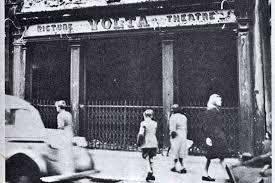 At The Volta With James Joyce Towards the end of 1909, James Joyce, future author of Ulysses and Finnegans Wake, founded and managed the first ever permanent cinema in Dublin. Remarkably, scholars have been able to trace a number of the films that Joyce selected and screened there and copies of reels of those films survive. This special programme brings
At The Volta With James Joyce Towards the end of 1909, James Joyce, future author of Ulysses and Finnegans Wake, founded and managed the first ever permanent cinema in Dublin. Remarkably, scholars have been able to trace a number of the films that Joyce selected and screened there and copies of reels of those films survive. This special programme brings 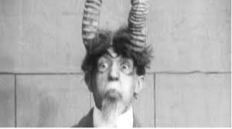 together a number of these rare short films and will include little-known gems such as How Cretinetti Pays his Debts (Italy, 1909) , Aviation Weeks at Rheims (Great Britain 1909) , A Glass of Goat’s Milk (Great Britain 1909), The Way of the Cross (USA 1909), Pêche aux Crocodiles (France 1909), Bianca Capello (Italy 1909) and Une Conquête (France 1909). Presented as part of the 19th International James Joyce Symposium. Introduced by John McCourt (University of Macerata). With live musical accompaniment by Forrester Pyke. Film Theatre, Glasgow Link
together a number of these rare short films and will include little-known gems such as How Cretinetti Pays his Debts (Italy, 1909) , Aviation Weeks at Rheims (Great Britain 1909) , A Glass of Goat’s Milk (Great Britain 1909), The Way of the Cross (USA 1909), Pêche aux Crocodiles (France 1909), Bianca Capello (Italy 1909) and Une Conquête (France 1909). Presented as part of the 19th International James Joyce Symposium. Introduced by John McCourt (University of Macerata). With live musical accompaniment by Forrester Pyke. Film Theatre, Glasgow Link
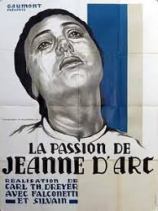 Passion of Joan of Arc (Dir. Carl Theodore Dreyer, 1928) (Screening format – not known, 82 mins) In 1926 Danish film director Dreyer was invited to make a film in France by the Societe Generale des Films and chose to direct a film about Joan of Arc, due to her renewed popularity in France (having been canonised as a saint of
Passion of Joan of Arc (Dir. Carl Theodore Dreyer, 1928) (Screening format – not known, 82 mins) In 1926 Danish film director Dreyer was invited to make a film in France by the Societe Generale des Films and chose to direct a film about Joan of Arc, due to her renewed popularity in France (having been canonised as a saint of  the Roman Catholic Church in 1920 and subsequently adopted as one of the patron saints of France). Apparently discarding a script provided by the Societe, Dreyer spent over a year researching Joan of Arc including study of the actual transcripts of her trial before producing a script of his own. In the title role Dreyer cast the little-known stage actress Renee Jeanne Falconnetti who had previously acted in just two previous, inconsequential films, both back in 1917. The film focuses upon the trial and eventual execution of Joan of Arc after she is captured by the English. Although not a popular success at the time, the film attracted immediate critical
the Roman Catholic Church in 1920 and subsequently adopted as one of the patron saints of France). Apparently discarding a script provided by the Societe, Dreyer spent over a year researching Joan of Arc including study of the actual transcripts of her trial before producing a script of his own. In the title role Dreyer cast the little-known stage actress Renee Jeanne Falconnetti who had previously acted in just two previous, inconsequential films, both back in 1917. The film focuses upon the trial and eventual execution of Joan of Arc after she is captured by the English. Although not a popular success at the time, the film attracted immediate critical  praise. The New York Times critic wrote “…as a film work of art, this takes precedence over anything so far produced. It makes worthy pictures of the past look like tinsel shams. It fills one with such intense admiration that other pictures appear but trivial in comparison.” Falconnetti’s performance has been widely lauded with critic Pauline Kael writing in 1982 that her portrayal “…may be the finest performance ever recorded on film.” The film was subsequently re-edited against Dreyer’s wishes and his original version was long thought lost. But in 1981 a near perfect copy was found in the attic of a psychiatric hospital in Oslo. The Passion of Joan of Arc now regularly appears in ‘Top Ten’ lists not just of silent films but best films of all time. Find out more at rogerebert.com . Presented by Northern Silents. With live musical accompaniment by pianist Utsav Lal. , Link
praise. The New York Times critic wrote “…as a film work of art, this takes precedence over anything so far produced. It makes worthy pictures of the past look like tinsel shams. It fills one with such intense admiration that other pictures appear but trivial in comparison.” Falconnetti’s performance has been widely lauded with critic Pauline Kael writing in 1982 that her portrayal “…may be the finest performance ever recorded on film.” The film was subsequently re-edited against Dreyer’s wishes and his original version was long thought lost. But in 1981 a near perfect copy was found in the attic of a psychiatric hospital in Oslo. The Passion of Joan of Arc now regularly appears in ‘Top Ten’ lists not just of silent films but best films of all time. Find out more at rogerebert.com . Presented by Northern Silents. With live musical accompaniment by pianist Utsav Lal. , Link
22 June
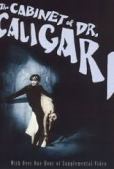 Cabinet of Dr Caligari (Dir. Robert Wiene, 1920) (Screening format – not known, 77 mins) In the village of Holstenwall, fairground hypnotist Dr Caligari (Werner Krauss) puts on show a somnambulist called Cesare (Conrad Veidt) who has been asleep for twenty three years. At night, Cesare walks the streets murdering people on the doctor’s orders. A student (Friedrich Feher) suspects Caligari after a friend is found dead and it transpires that the doctor is the director of a lunatic asylum. Fueled by the pessimism and gloom of post-war Germany, the sets by Hermann Warm stand unequaled as a shining example of Expressionist design. Find out more at wikipedia.org. With live musical accompaniment composed and played by Karl Bartos (ex-Kraftwerk). Barbican, London Link
Cabinet of Dr Caligari (Dir. Robert Wiene, 1920) (Screening format – not known, 77 mins) In the village of Holstenwall, fairground hypnotist Dr Caligari (Werner Krauss) puts on show a somnambulist called Cesare (Conrad Veidt) who has been asleep for twenty three years. At night, Cesare walks the streets murdering people on the doctor’s orders. A student (Friedrich Feher) suspects Caligari after a friend is found dead and it transpires that the doctor is the director of a lunatic asylum. Fueled by the pessimism and gloom of post-war Germany, the sets by Hermann Warm stand unequaled as a shining example of Expressionist design. Find out more at wikipedia.org. With live musical accompaniment composed and played by Karl Bartos (ex-Kraftwerk). Barbican, London Link
24 June
 Pandora’s Box (Dir. G W Pabst, Ger, 1929) (Screening format – not known, 135mins) Based on two plays by the German author Frank Wedekind, Erdgeist (Earth Spirit, 1895), which Pabst himself had directed for the stage, and Die Büchse der Pandora (Pandora’s Box, 1904), the silent drama follows Pthe tumultuous life of the showgirl Lulu whose unselfconscious sexuality brings about the ruin of all those that fall for her and eventually her own. In a daring move, Pabst chose a little known American actress over the
Pandora’s Box (Dir. G W Pabst, Ger, 1929) (Screening format – not known, 135mins) Based on two plays by the German author Frank Wedekind, Erdgeist (Earth Spirit, 1895), which Pabst himself had directed for the stage, and Die Büchse der Pandora (Pandora’s Box, 1904), the silent drama follows Pthe tumultuous life of the showgirl Lulu whose unselfconscious sexuality brings about the ruin of all those that fall for her and eventually her own. In a daring move, Pabst chose a little known American actress over the  more experienced Marlene Dietrich for the part of Lulu, a decision that made the young Louise Brooks an international star. Her innocent looks paired with her natural erotic allure and sense of movement – Brooks was also a dancer – perfectly matched Pabst’s idea of his heroine as unwitting seductress. Subjected to cuts to eliminate some of its “scandalous” content and unfavourably reviewed by critics at the time, it is now considered one of the boldest and most modern films of the Weimar era highlighting Pabst’s command of camera language and montage. Find out more at silentlondon.co.uk . Presented by The Lucky Dog Picturehouse. With live musical accompaniment. Wilton’s Music Hall, London Link
more experienced Marlene Dietrich for the part of Lulu, a decision that made the young Louise Brooks an international star. Her innocent looks paired with her natural erotic allure and sense of movement – Brooks was also a dancer – perfectly matched Pabst’s idea of his heroine as unwitting seductress. Subjected to cuts to eliminate some of its “scandalous” content and unfavourably reviewed by critics at the time, it is now considered one of the boldest and most modern films of the Weimar era highlighting Pabst’s command of camera language and montage. Find out more at silentlondon.co.uk . Presented by The Lucky Dog Picturehouse. With live musical accompaniment. Wilton’s Music Hall, London Link
25 June
 The Hunchback of Notre Dame (Dir.Wallace Worsley, US, 1923) (Screening format – not known, 117mins) A classic silent film, full of drama, frights, romance, and excitement – Quasimodo’s story is told with the thrilling addition of a live score – bringing this extraordinary movie to life like never before. Quasimodo is ordered to kidnap a gypsy girl, Esmerelda,
The Hunchback of Notre Dame (Dir.Wallace Worsley, US, 1923) (Screening format – not known, 117mins) A classic silent film, full of drama, frights, romance, and excitement – Quasimodo’s story is told with the thrilling addition of a live score – bringing this extraordinary movie to life like never before. Quasimodo is ordered to kidnap a gypsy girl, Esmerelda,  by his wicked master, and an unlikely friendship forms between them. However, the reclusive hunchback is tested to his limits when Esmerelda is framed for attempted murder, and must fight back against the powers that have subjugated him. Victor Hugo’s tragic tale of the deformed bellringer and his love for Esmeralda, a doomed gypsy girl, has been filmed so many times and it’s not hard to see the film’s ageless appeal. While some movie lovers who cite the 1939 Charles Laughton version as their favorite interpretation, the general consensus is that Chaney remains the definitive Quasimodo. Find out more at wikipedia.org. Presented by The Lucky Dog Picturehouse. With live musical accompaniment by Ben Comeau. Wilton’s Music Hall, London Link
by his wicked master, and an unlikely friendship forms between them. However, the reclusive hunchback is tested to his limits when Esmerelda is framed for attempted murder, and must fight back against the powers that have subjugated him. Victor Hugo’s tragic tale of the deformed bellringer and his love for Esmeralda, a doomed gypsy girl, has been filmed so many times and it’s not hard to see the film’s ageless appeal. While some movie lovers who cite the 1939 Charles Laughton version as their favorite interpretation, the general consensus is that Chaney remains the definitive Quasimodo. Find out more at wikipedia.org. Presented by The Lucky Dog Picturehouse. With live musical accompaniment by Ben Comeau. Wilton’s Music Hall, London Link
26 June
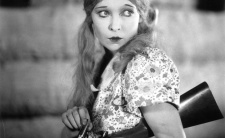 Shooting Stars (Dir. Anthony Asquith and A.V. Bramble, UK, 1928) (Screening format – 35mm, 80mins) At Zenith Studios, a starlet plots an escape to Hollywood with her lover and the murder of her superfluous husband. Shooting Stars is a must for
Shooting Stars (Dir. Anthony Asquith and A.V. Bramble, UK, 1928) (Screening format – 35mm, 80mins) At Zenith Studios, a starlet plots an escape to Hollywood with her lover and the murder of her superfluous husband. Shooting Stars is a must for 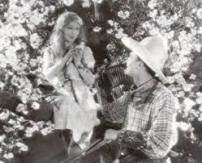 any silent cinema fan. Offering a rare insight into the workings of a 1920s film studio, there are location scenes, comic stunts and an on-set jazz band which demonstrate just what life was like in the early days of cinema. Shooting Stars begins as a witty and affectionate look at the smoke-and-mirrors world of filmmaking, with many a wink to its audience, but as the paranoia associated with adultery takes its toll, the mood becomes somewhat darker. Find out more at screenonline.org.uk . Presented by The Lucky Dog Picturehouse. With live musical accompaniment by Sam Watts. Wilton’s Music Hall, London Link
any silent cinema fan. Offering a rare insight into the workings of a 1920s film studio, there are location scenes, comic stunts and an on-set jazz band which demonstrate just what life was like in the early days of cinema. Shooting Stars begins as a witty and affectionate look at the smoke-and-mirrors world of filmmaking, with many a wink to its audience, but as the paranoia associated with adultery takes its toll, the mood becomes somewhat darker. Find out more at screenonline.org.uk . Presented by The Lucky Dog Picturehouse. With live musical accompaniment by Sam Watts. Wilton’s Music Hall, London Link
July
24 July
 A Cottage on Dartmoor (Dir. Anthony Asquith, 1929) (Screening format – not known, 84mins) Joe (Uno Henning) works as a barber in a shop in a Devon town, alongside a manicurist called Sally (Norah Baring). He becomes infatuated with her and asks her out but it is clear that Sally does not
A Cottage on Dartmoor (Dir. Anthony Asquith, 1929) (Screening format – not known, 84mins) Joe (Uno Henning) works as a barber in a shop in a Devon town, alongside a manicurist called Sally (Norah Baring). He becomes infatuated with her and asks her out but it is clear that Sally does not  reciprocate Joe’s feelings. Joe’s infatuation with her develops into obsession. Meanwhile a young farmer Harry (Hans Schlettow), begins to woo Sally and the couple begin seeing each other which leaves Joe in despair. After a fight with Harry, Joe is jailed but swears revenge on Harry and Sally. A Cottage on Dartmoor is a tale of love and revenge set in the bleak landscape of Dartmoor and a thoughtful distillation of the best of European silent film techniques from a director steeped in the work of the Soviet avant-garde and German expressionism. One of the last films of the silent era and a virtuoso piece of film-making, A Cottage on Dartmoor was a final passionate cry in defence of an art form soon to be obsolete. Find out more at silentfilm.org. Presented by The Lucky Dog Picturehouse. With live musical accompaniment . Wilton’s Music Hall, London Link
reciprocate Joe’s feelings. Joe’s infatuation with her develops into obsession. Meanwhile a young farmer Harry (Hans Schlettow), begins to woo Sally and the couple begin seeing each other which leaves Joe in despair. After a fight with Harry, Joe is jailed but swears revenge on Harry and Sally. A Cottage on Dartmoor is a tale of love and revenge set in the bleak landscape of Dartmoor and a thoughtful distillation of the best of European silent film techniques from a director steeped in the work of the Soviet avant-garde and German expressionism. One of the last films of the silent era and a virtuoso piece of film-making, A Cottage on Dartmoor was a final passionate cry in defence of an art form soon to be obsolete. Find out more at silentfilm.org. Presented by The Lucky Dog Picturehouse. With live musical accompaniment . Wilton’s Music Hall, London Link
25 July
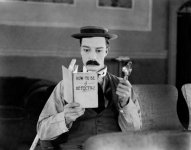 Sherlock Jnr (Dir. Buster Keaton, 1924) (Screening format – not known, 45 mins) In Sherlock Jr, a kindly movie projectionist (Buster Keaton) longs to be a detective. When his fiancée (Kathryn McGuire) is robbed by a local thief (Ward Crane), the poor projectionist is framed for the crime. Using his amateur detective skills, the projectionist follows the thief to the train station – only to find himself locked in a train car. Disheartened, he returns to his movie theatre, where he falls asleep and dreams that he is the great Sherlock Holmes. Although not a popular success on its initial release, the film has come to be recognised as a Keaton classic with its special effects and elaborate stunts making it a landmark in motion picture history. Find out more at silentfilm.org. Presented by The Lucky Dog Picturehouse. With live musical accompaniment . Wilton’s Music Hall, London Link
Sherlock Jnr (Dir. Buster Keaton, 1924) (Screening format – not known, 45 mins) In Sherlock Jr, a kindly movie projectionist (Buster Keaton) longs to be a detective. When his fiancée (Kathryn McGuire) is robbed by a local thief (Ward Crane), the poor projectionist is framed for the crime. Using his amateur detective skills, the projectionist follows the thief to the train station – only to find himself locked in a train car. Disheartened, he returns to his movie theatre, where he falls asleep and dreams that he is the great Sherlock Holmes. Although not a popular success on its initial release, the film has come to be recognised as a Keaton classic with its special effects and elaborate stunts making it a landmark in motion picture history. Find out more at silentfilm.org. Presented by The Lucky Dog Picturehouse. With live musical accompaniment . Wilton’s Music Hall, London Link
26 July
 Underground (Dir. Anthony Asquith, GB, 1928) (Screening format – not known, 84 mins) In 1920s London, during a normal hectic day on the Underground, mild mannered Northern Line porter Bill (Brian Aherne) falls for shop worker Nell (Elissa Landi). But their relationship is threatened by power station worker Burt (Cyril
Underground (Dir. Anthony Asquith, GB, 1928) (Screening format – not known, 84 mins) In 1920s London, during a normal hectic day on the Underground, mild mannered Northern Line porter Bill (Brian Aherne) falls for shop worker Nell (Elissa Landi). But their relationship is threatened by power station worker Burt (Cyril  McLaglan) who also has eyes for Nell. Consumed by jealousy, Burt plots to discredit Bill with a plan that results in a daring chase through London’s underground and across rooftops of the city. Although Underground was only Asquith‘s second film he handles the melodramatic story with confidence and great sophistication. Underground is a rare study of 1920s working-class London, and offers a fascinating and historically interesting glimpse of its public transport system. Find out more at screenonline.org.uk. Presented by The Lucky Dog Picturehouse. With live musical accompaniment by Tom Marlow . Wilton’s Music Hall, London Link
McLaglan) who also has eyes for Nell. Consumed by jealousy, Burt plots to discredit Bill with a plan that results in a daring chase through London’s underground and across rooftops of the city. Although Underground was only Asquith‘s second film he handles the melodramatic story with confidence and great sophistication. Underground is a rare study of 1920s working-class London, and offers a fascinating and historically interesting glimpse of its public transport system. Find out more at screenonline.org.uk. Presented by The Lucky Dog Picturehouse. With live musical accompaniment by Tom Marlow . Wilton’s Music Hall, London Link
27 July
 Nosferatu: A Symphony of Horror (Dir. F W Murnau, 1922) (Screening format – not known, 96mins) In this first-ever screen adaptation of Bram Stoker’s novel Dracula, a simple real-estate transaction leads an intrepid businessman deep into the superstitious heart of Transylvania. There he encounters the otherworldly Count Orlok (portrayed by the legendary Max Schreck, in a performance the very backstory of which has spawned its own mythology) who soon after embarks upon a cross-continental voyage to take up residence in a distant new land… and establish his ambiguous dominion. The film was an unauthorised adaption of Stoker’s ‘novel with
Nosferatu: A Symphony of Horror (Dir. F W Murnau, 1922) (Screening format – not known, 96mins) In this first-ever screen adaptation of Bram Stoker’s novel Dracula, a simple real-estate transaction leads an intrepid businessman deep into the superstitious heart of Transylvania. There he encounters the otherworldly Count Orlok (portrayed by the legendary Max Schreck, in a performance the very backstory of which has spawned its own mythology) who soon after embarks upon a cross-continental voyage to take up residence in a distant new land… and establish his ambiguous dominion. The film was an unauthorised adaption of Stoker’s ‘novel with  names and other details changed because the studio could not obtain the rights to the story. Stoker’s heirs sued over the adaption and a court ruling ordered that all copies of the film be destroyed. However, a few prints survived and the film came to be regarded as an inspirational master work of the cinema. Brilliantly eerie, with imaginative touches which later adaptions never achieved and featuring some of the most iconic images in cinema history, Nosferatu continues to haunt modern audiences with its unshakable power of gothic imagery and blood curdling suspense.. Find out more at www.rogerebert.com With live organ accompaniment by Donald Mackenzie. Musical Museum, Brentford Link
names and other details changed because the studio could not obtain the rights to the story. Stoker’s heirs sued over the adaption and a court ruling ordered that all copies of the film be destroyed. However, a few prints survived and the film came to be regarded as an inspirational master work of the cinema. Brilliantly eerie, with imaginative touches which later adaptions never achieved and featuring some of the most iconic images in cinema history, Nosferatu continues to haunt modern audiences with its unshakable power of gothic imagery and blood curdling suspense.. Find out more at www.rogerebert.com With live organ accompaniment by Donald Mackenzie. Musical Museum, Brentford Link
29 July
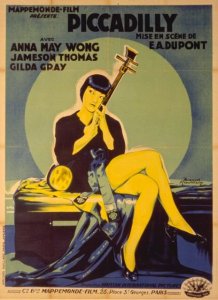 Piccadilly (Dir E A Dupont, UK, 1929) (Screening format – not known, 92 mins) A film noir before the term was in use, uncredited German director E.A. Dupont’s Piccadilly is one of the true greats of British silent films, on a par with the best of Anthony Asquith or Alfred Hitchcock during this period. Valentine Wilmot (Jameson Thomas) owns a nightclub featuring dancers Mabel (Gilda Gray) and Vic (Cyril Ritchard). After a confrontation with Wilmot, Vic quits
Piccadilly (Dir E A Dupont, UK, 1929) (Screening format – not known, 92 mins) A film noir before the term was in use, uncredited German director E.A. Dupont’s Piccadilly is one of the true greats of British silent films, on a par with the best of Anthony Asquith or Alfred Hitchcock during this period. Valentine Wilmot (Jameson Thomas) owns a nightclub featuring dancers Mabel (Gilda Gray) and Vic (Cyril Ritchard). After a confrontation with Wilmot, Vic quits  performing at the club. When the joint starts losing business, a desperate Wilmot hires former dishwasher Shosho (Anna May Wong) as a dancer. She is an instant hit and forms a rapport with Wilmot, which makes both Mabel and Shosho’s friend (King Ho Chang) jealous, leading to a mysterious murder. A stylish evocation of Jazz Age London, with dazzlingly fluid cinematography and scenes ranging from the opulent West End to the seediness of Limehouse. One of the pinnacles of British silent cinema, Piccadilly is a sumptuous show business melodrama seething with sexual and racial tension – with an original screenplay by Arnold Bennett. Find out more at screenonline.org.uk . Presented by The Lucky Dog Picturehouse. With live musical accompaniment by Christopher Eldred . Wilton’s Music Hall, London Link
performing at the club. When the joint starts losing business, a desperate Wilmot hires former dishwasher Shosho (Anna May Wong) as a dancer. She is an instant hit and forms a rapport with Wilmot, which makes both Mabel and Shosho’s friend (King Ho Chang) jealous, leading to a mysterious murder. A stylish evocation of Jazz Age London, with dazzlingly fluid cinematography and scenes ranging from the opulent West End to the seediness of Limehouse. One of the pinnacles of British silent cinema, Piccadilly is a sumptuous show business melodrama seething with sexual and racial tension – with an original screenplay by Arnold Bennett. Find out more at screenonline.org.uk . Presented by The Lucky Dog Picturehouse. With live musical accompaniment by Christopher Eldred . Wilton’s Music Hall, London Link
August
18 August
 Piccadilly (Dir E A Dupont, UK, 1929) (Screening format – not known, 92 mins) A film noir before the term was in use, uncredited German director E.A. Dupont’s Piccadilly is one of the true greats of British silent films, on a par with the best of Anthony Asquith or Alfred Hitchcock during this period. Valentine Wilmot (Jameson Thomas) owns a nightclub featuring dancers Mabel (Gilda Gray) and Vic (Cyril Ritchard). After a confrontation with Wilmot, Vic quits performing at the club. When the joint starts losing business, a desperate Wilmot hires former dishwasher
Piccadilly (Dir E A Dupont, UK, 1929) (Screening format – not known, 92 mins) A film noir before the term was in use, uncredited German director E.A. Dupont’s Piccadilly is one of the true greats of British silent films, on a par with the best of Anthony Asquith or Alfred Hitchcock during this period. Valentine Wilmot (Jameson Thomas) owns a nightclub featuring dancers Mabel (Gilda Gray) and Vic (Cyril Ritchard). After a confrontation with Wilmot, Vic quits performing at the club. When the joint starts losing business, a desperate Wilmot hires former dishwasher  Shosho (Anna May Wong) as a dancer. She is an instant hit and forms a rapport with Wilmot, which makes both Mabel and Shosho’s friend (King Ho Chang) jealous, leading to a mysterious murder. A stylish evocation of Jazz Age London, with dazzlingly fluid cinematography and scenes ranging from the opulent West End to the seediness of Limehouse. One of the pinnacles of British silent cinema, Piccadilly is a sumptuous show business melodrama seething with sexual and racial tension – with an original screenplay by Arnold Bennett. Find out more at screenonline.org.uk . With live organ accompaniment by Donald Mackenzie. Musical Museum, Brentford Link
Shosho (Anna May Wong) as a dancer. She is an instant hit and forms a rapport with Wilmot, which makes both Mabel and Shosho’s friend (King Ho Chang) jealous, leading to a mysterious murder. A stylish evocation of Jazz Age London, with dazzlingly fluid cinematography and scenes ranging from the opulent West End to the seediness of Limehouse. One of the pinnacles of British silent cinema, Piccadilly is a sumptuous show business melodrama seething with sexual and racial tension – with an original screenplay by Arnold Bennett. Find out more at screenonline.org.uk . With live organ accompaniment by Donald Mackenzie. Musical Museum, Brentford Link
September
15 September
 Carmen Of The North (Dir. Maurits Binger/Hans Nesna, Neth, 1919) (Screening format – not known, 60mins) Annie Bos, the Netherlands’ first real film diva, plays the sensual Carmen, a femme fatale who winds Jozef around her little finger and drives him to despair. Jozef, played by the Dutch ‘Latin lover’ Adelqui Migliar, falls for the charms of the seductive Carmen. For her, he abandons his fiancée and his mother and deserts from the army. But then Carmen leaves Jozef for opera singer Dalboni. Things
Carmen Of The North (Dir. Maurits Binger/Hans Nesna, Neth, 1919) (Screening format – not known, 60mins) Annie Bos, the Netherlands’ first real film diva, plays the sensual Carmen, a femme fatale who winds Jozef around her little finger and drives him to despair. Jozef, played by the Dutch ‘Latin lover’ Adelqui Migliar, falls for the charms of the seductive Carmen. For her, he abandons his fiancée and his mother and deserts from the army. But then Carmen leaves Jozef for opera singer Dalboni. Things  quickly start to go downhill for him after that. The climax takes place in a theatre where Dalboni is performing – a terrible tragedy unfolds behind the scenes. Carmen of the North was the most important film to come out of Filmfabriek Hollandia, the biggest film producer in Dutch history, which had been founded by Maurits Binger. It is a loose adaptation of Prosper Mérimée’s novelle Carmen – known mainly for the opera French composer Georges Bizet based on it. Find out more at wikipedia.org With live organ accompaniment by Donald Mackenzie. Musical Museum, Brentford Link
quickly start to go downhill for him after that. The climax takes place in a theatre where Dalboni is performing – a terrible tragedy unfolds behind the scenes. Carmen of the North was the most important film to come out of Filmfabriek Hollandia, the biggest film producer in Dutch history, which had been founded by Maurits Binger. It is a loose adaptation of Prosper Mérimée’s novelle Carmen – known mainly for the opera French composer Georges Bizet based on it. Find out more at wikipedia.org With live organ accompaniment by Donald Mackenzie. Musical Museum, Brentford Link
19 September
 Neil Brand Presents Laurel And Hardy After the national success of his long-running show ‘Neil Brand Presents Buster Keaton’, the composer/writer/broadcaster/musician returns with an all-new show about the immortal comedy duo recently portrayed in the hit film ‘Stan and Ollie’. Fully illustrated with stills, clips (both silent and sound) and Neil’s superlative piano accompaniment and culminating in two of the Boys’ best silent short films, Big Business and Liberty, this is a show that promises gales of laughter throughout, as well as getting under the skin of two warm, funny men who continue to make the world laugh when it needs it most. With live piano accompaniment by Neil Brand. Gatehouse Theatre, Stafford Link
Neil Brand Presents Laurel And Hardy After the national success of his long-running show ‘Neil Brand Presents Buster Keaton’, the composer/writer/broadcaster/musician returns with an all-new show about the immortal comedy duo recently portrayed in the hit film ‘Stan and Ollie’. Fully illustrated with stills, clips (both silent and sound) and Neil’s superlative piano accompaniment and culminating in two of the Boys’ best silent short films, Big Business and Liberty, this is a show that promises gales of laughter throughout, as well as getting under the skin of two warm, funny men who continue to make the world laugh when it needs it most. With live piano accompaniment by Neil Brand. Gatehouse Theatre, Stafford Link
28 September
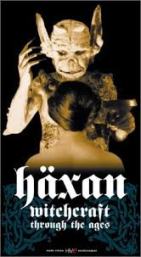 Haxan: Witchcraft Through the Ages (Dir. Benjamin Christensen, Swe., 1922) ( Screening format – not known, 105mins) A fictionalized documentary with dramatic reconstructions showing the evolution of witchcraft, from its pagan roots to its confusion with hysteria in modern (1922) Europe. Based partly on Christensen’s study of the Malleus
Haxan: Witchcraft Through the Ages (Dir. Benjamin Christensen, Swe., 1922) ( Screening format – not known, 105mins) A fictionalized documentary with dramatic reconstructions showing the evolution of witchcraft, from its pagan roots to its confusion with hysteria in modern (1922) Europe. Based partly on Christensen’s study of the Malleus  Maleficarum, a 15th-century German guide for inquisitors, Häxan is a study of how superstition and the misunderstanding of diseases and mental illness could lead to the hysteria of the witch hunts. Although it won acclaim in Denmark and Sweden when first released, Haxan was heavily censored or banned outright in many countries. But it is now considered to be Christensen’s finest work, a witches’ brew of the scary, the grotesque, and the darkly humorous. Find out more at thedevilsmanor.blogspot.co.uk . Presented by South West Silents. With live musical accompaniment by Stephen Horne. IMAX, Bristol Link
Maleficarum, a 15th-century German guide for inquisitors, Häxan is a study of how superstition and the misunderstanding of diseases and mental illness could lead to the hysteria of the witch hunts. Although it won acclaim in Denmark and Sweden when first released, Haxan was heavily censored or banned outright in many countries. But it is now considered to be Christensen’s finest work, a witches’ brew of the scary, the grotesque, and the darkly humorous. Find out more at thedevilsmanor.blogspot.co.uk . Presented by South West Silents. With live musical accompaniment by Stephen Horne. IMAX, Bristol Link
October
27 October
 The Phantom Carriage (Dir. Victor Sjöström, Swe, 1921) (Screening format – not known, 107mins) The last person to die on New Year’s Eve before the clock strikes twelve is doomed to take the reins of Death’s chariot and work tirelessly collecting fresh souls for the next year. So says the legend that drives The Phantom Carriage (Körkarlen), directed by the father of Swedish cinema, Victor Sjöström. The story,
The Phantom Carriage (Dir. Victor Sjöström, Swe, 1921) (Screening format – not known, 107mins) The last person to die on New Year’s Eve before the clock strikes twelve is doomed to take the reins of Death’s chariot and work tirelessly collecting fresh souls for the next year. So says the legend that drives The Phantom Carriage (Körkarlen), directed by the father of Swedish cinema, Victor Sjöström. The story,  based on a novel by Nobel Prize winner Selma Lagerlöf, concerns an alcoholic, abusive ne’er-do-well (Sjöström himself) who is shown the error of his ways, and the pure-of-heart Salvation Army sister who believes in his redemption. This extraordinarily rich and innovative silent classic (which inspired Ingmar Bergman to make movies) is a Dickensian ghost story and a deeply moving morality tale, as well as a showcase for groundbreaking special effects. Find out more at lukemcgrath.co.uk With live organ accompaniment by Donald Mackenzie. Musical Museum, Brentford Link
based on a novel by Nobel Prize winner Selma Lagerlöf, concerns an alcoholic, abusive ne’er-do-well (Sjöström himself) who is shown the error of his ways, and the pure-of-heart Salvation Army sister who believes in his redemption. This extraordinarily rich and innovative silent classic (which inspired Ingmar Bergman to make movies) is a Dickensian ghost story and a deeply moving morality tale, as well as a showcase for groundbreaking special effects. Find out more at lukemcgrath.co.uk With live organ accompaniment by Donald Mackenzie. Musical Museum, Brentford Link
November
9 November
 Nosferatu (Dir. F W Murnau, 1922) (Screening format – not known, 96mins) A German Expressionist horror masterpiece starring Max Shreck as the vampire Count Orlok. The film was an unauthorised adaption of Bram Stoker’s ‘Dracula’ with names and other details changed because the studio could not obtain the rights to the novel. Stoker’s heirs sued over the adaption and a court ruling ordered that all copies of the film be destroyed. However, a few prints survived and the film came to be regarded as an inspirational master work of the cinema. In the film, Count Orlok travels across Europe leaving a trail of death in his wake. Brilliantly eerie, with imaginative touches which later adaptions never achieved. Find out more at wikipedia.org With live musical accompaniment by Minema. Assembly Rooms, Tamworth Link
Nosferatu (Dir. F W Murnau, 1922) (Screening format – not known, 96mins) A German Expressionist horror masterpiece starring Max Shreck as the vampire Count Orlok. The film was an unauthorised adaption of Bram Stoker’s ‘Dracula’ with names and other details changed because the studio could not obtain the rights to the novel. Stoker’s heirs sued over the adaption and a court ruling ordered that all copies of the film be destroyed. However, a few prints survived and the film came to be regarded as an inspirational master work of the cinema. In the film, Count Orlok travels across Europe leaving a trail of death in his wake. Brilliantly eerie, with imaginative touches which later adaptions never achieved. Find out more at wikipedia.org With live musical accompaniment by Minema. Assembly Rooms, Tamworth Link
10 November
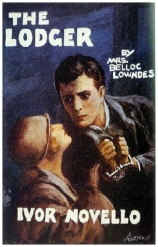 The Lodger: A Story of the London Fog (Dir. Alfred Hitchcock, UK, 1927) (Screening format – not known, 91 mins ) In The Lodger, a serial killer known as “The Avenger” is on the loose in London, murdering blonde women. A mysterious man (Ivor Novello) arrives at the house of Mr. and Mrs. Bunting looking for a room to rent. The Bunting’s daughter (June Tripp) is a blonde model and is seeing one of the detectives (Malcolm Keen) assigned to the case. The detective becomes
The Lodger: A Story of the London Fog (Dir. Alfred Hitchcock, UK, 1927) (Screening format – not known, 91 mins ) In The Lodger, a serial killer known as “The Avenger” is on the loose in London, murdering blonde women. A mysterious man (Ivor Novello) arrives at the house of Mr. and Mrs. Bunting looking for a room to rent. The Bunting’s daughter (June Tripp) is a blonde model and is seeing one of the detectives (Malcolm Keen) assigned to the case. The detective becomes  jealous of the lodger and begins to suspect he may be the avenger. Based on a best-selling novel by Marie Belloc Lowndes, first published in 1913, loosely based on the Jack the Ripper murders, The Lodger was Hitchcock’s first thriller, and his first critical and commercial success. Made shortly after his return from Germany, the film betrays the influence of the German expressionist tradition established in such films as The Cabinet of Dr. Caligari (1919) and Nosferatu (1922). Find out more at silentfilm.org With live musical accompaniment by Minema. Tamworth Castle Link
jealous of the lodger and begins to suspect he may be the avenger. Based on a best-selling novel by Marie Belloc Lowndes, first published in 1913, loosely based on the Jack the Ripper murders, The Lodger was Hitchcock’s first thriller, and his first critical and commercial success. Made shortly after his return from Germany, the film betrays the influence of the German expressionist tradition established in such films as The Cabinet of Dr. Caligari (1919) and Nosferatu (1922). Find out more at silentfilm.org With live musical accompaniment by Minema. Tamworth Castle Link
24 November
 Foolish Wives (Dir. Erich von Stroheim, US, 1922) (Screening format – not known, 117mins) In Stroheim’s 1922 film a con artist masquerades as Russian nobility and attempts to seduce the wife of an American diplomat. When released in 1922, the film was the most
Foolish Wives (Dir. Erich von Stroheim, US, 1922) (Screening format – not known, 117mins) In Stroheim’s 1922 film a con artist masquerades as Russian nobility and attempts to seduce the wife of an American diplomat. When released in 1922, the film was the most  expensive film made at that time, and billed by Universal Studios as the “first million-dollar movie” to come out of Hollywood. Originally, von Stroheim intended the film to run anywhere between 6 and 10 hours, and be shown over two evenings, but Universal executives opposed this idea. The studio bosses cut the film drastically before the release date. Find out more at sensesofcinema.com. With live organ accompaniment by Donald Mackenzie. Musical Museum, Brentford Link
expensive film made at that time, and billed by Universal Studios as the “first million-dollar movie” to come out of Hollywood. Originally, von Stroheim intended the film to run anywhere between 6 and 10 hours, and be shown over two evenings, but Universal executives opposed this idea. The studio bosses cut the film drastically before the release date. Find out more at sensesofcinema.com. With live organ accompaniment by Donald Mackenzie. Musical Museum, Brentford Link
December
15 December
 Cinderella (Dir. James Kirkwood, US, 1914) (Screening format – not known, 52 mins) The classic fairy tale of a poor urchin who finds her Prince Charming is brought to life by silent screen legend Mary Pickford, in one of the roles that made her “”America’s Sweetheart.””
Cinderella (Dir. James Kirkwood, US, 1914) (Screening format – not known, 52 mins) The classic fairy tale of a poor urchin who finds her Prince Charming is brought to life by silent screen legend Mary Pickford, in one of the roles that made her “”America’s Sweetheart.””  Employing ingenious uses of trick photography and stop-motion animation, Cinderella was a hit at the box office during Christmas week of 1914. The success of Pickford features such as Cinderella convinced Paramount mogul Adolph Zukor to give her complete artistic control over her films and a record-breaking $10,000 a week salary a mere two years later. Prince Charming is played by Pickford’s real-life husband, Owen Moore (he was not so charming in real life, as she would leave him for her second husband,
Employing ingenious uses of trick photography and stop-motion animation, Cinderella was a hit at the box office during Christmas week of 1914. The success of Pickford features such as Cinderella convinced Paramount mogul Adolph Zukor to give her complete artistic control over her films and a record-breaking $10,000 a week salary a mere two years later. Prince Charming is played by Pickford’s real-life husband, Owen Moore (he was not so charming in real life, as she would leave him for her second husband, 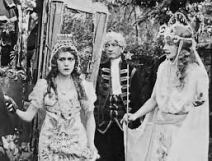 Douglas Fairbanks, in 1920.) Director James Kirkwood began his career acting in D.W. Griffith pictures such as A Corner in Wheat (1909) and Home, Sweet Home (1914). A close friend of Pickford’s, he directed several of her films, including Home, Sweet Home (1914) and Fanchon the Cricket (1915). Despite his success behind the camera, he would continue acting well into the 1950s. The film was initially titled The Stepsister, presumably in an attempt to distinguish it from an earlier 1911 version starring Florence La Badie.Find out more at moviessilently.com With live organ accompaniment by Donald Mackenzie. Musical Museum, Brentford Link
Douglas Fairbanks, in 1920.) Director James Kirkwood began his career acting in D.W. Griffith pictures such as A Corner in Wheat (1909) and Home, Sweet Home (1914). A close friend of Pickford’s, he directed several of her films, including Home, Sweet Home (1914) and Fanchon the Cricket (1915). Despite his success behind the camera, he would continue acting well into the 1950s. The film was initially titled The Stepsister, presumably in an attempt to distinguish it from an earlier 1911 version starring Florence La Badie.Find out more at moviessilently.com With live organ accompaniment by Donald Mackenzie. Musical Museum, Brentford Link
